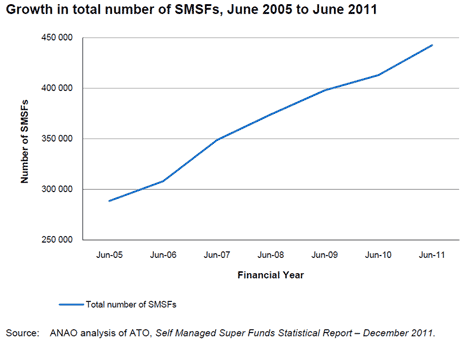More SMSFs borrowing from trust fund members to acquire property creating compliance issues
A growing number of self-managed super fund investors are using related-party loans to buy property, but they should tread carefully, according to Heather Gray, a partner at DLA Piper and chairwoman of the Superannuation Committee of the Law Council of Australia.
Related-party loans are those provided by a member of the fund or by a family member and can seem an attractive option SMSF investors providing funding at a higher loan-to-value ratio (LVR) and lower interest rates than those provided by a bank.
But Gray says the issue of related-party loans came up very often for advisors in relation to “compliance issues”.
Her warning comes as Australian National Audit Office (ANAO) reports of the continuing growth of the SMSF sector, with 32,875 new funds registered in 2010-11 compared with 29,578 in the previous financial year, taking the total number of SMSFs as of June 2011 to 442,528 with 841,283 members.
Click to enlargeGray says the ATO views related-party loans in the same way it views investments made into the fund that are not at arm’s length.
“If the interest rate is too low the ATO may look at the deal and say, ‘This is a sham’ – it’s not really a loan but a contribution and just a way of getting money into the fund without breaching the contribution cap,” Gray told delegates at the 2012 Institute of Chartered Accountants in Australia’s Business Forum.
“You would then be taxed unfavourably because you exceeding the contribution cap and all the advantages of borrowing through your SMSF [to acquire property] would be lost.”
Conversely, if the interest rate is too high the ATO may rule that it breaches the sole purpose test through providing a “non-retirement” benefit to the members.
In nearly all cases, Gray says when the ATO has targeted a fund it has due to the fund not satisfying the sole-purpose test.
The sole-purpose test requires that an SMSF be maintained to provide benefits to members upon their retirement, or their dependants if the member dies before retirement.
According to the ANAO, since 2004–05, the number of SMSFs has increased by 64%.
SMSF sector is the largest superannuation sector by number of funds, and in 2011 held 30% of all superannuation assets ($407.6 billion).
